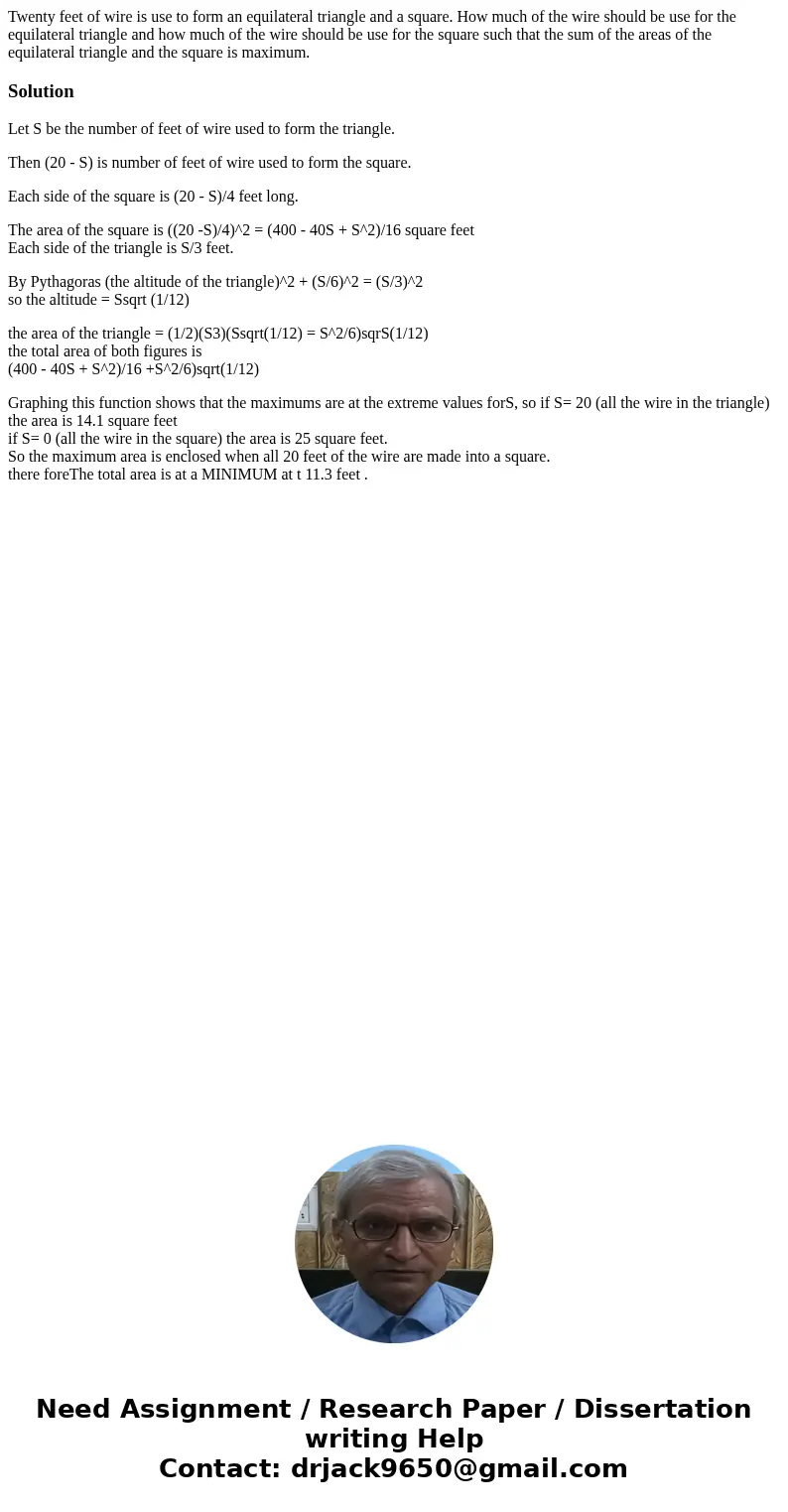Twenty feet of wire is use to form an equilateral triangle a
Solution
Let S be the number of feet of wire used to form the triangle.
Then (20 - S) is number of feet of wire used to form the square.
Each side of the square is (20 - S)/4 feet long.
The area of the square is ((20 -S)/4)^2 = (400 - 40S + S^2)/16 square feet
Each side of the triangle is S/3 feet.
By Pythagoras (the altitude of the triangle)^2 + (S/6)^2 = (S/3)^2
so the altitude = Ssqrt (1/12)
the area of the triangle = (1/2)(S3)(Ssqrt(1/12) = S^2/6)sqrS(1/12)
the total area of both figures is
(400 - 40S + S^2)/16 +S^2/6)sqrt(1/12)
Graphing this function shows that the maximums are at the extreme values forS, so if S= 20 (all the wire in the triangle) the area is 14.1 square feet
if S= 0 (all the wire in the square) the area is 25 square feet.
So the maximum area is enclosed when all 20 feet of the wire are made into a square.
there foreThe total area is at a MINIMUM at t 11.3 feet .

 Homework Sourse
Homework Sourse